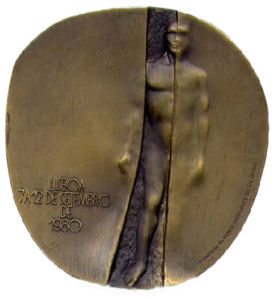-
2005
-
2006
-
2008
-
2011
-
2013
-
2014
-
2015
-
2015
-
2016
-
2017
-
2018
The Story of SIDM's Logo
The SIDM logo is an artistic rendition of a commemorative medal crafted by the gifted and prolific Portuguese artist Irene Vilar (1931 – 2008). The original medal was designed for the 4th Congresso Nacional de Medicina in Lisbon, 1980.
The ‘half-veiled man’ conveys the inherent uncertainty of the diagnostic process, and the constant quest to clarify truth in science, medicine, and diagnosis.

